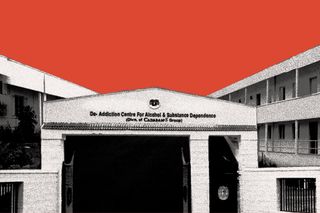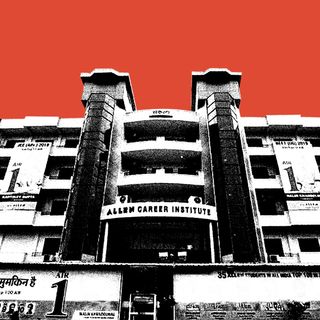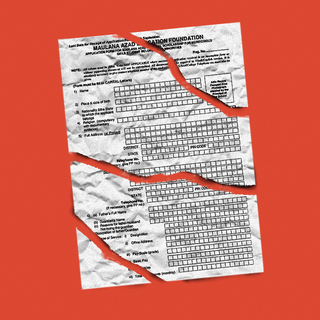
Only Four De‑Addiction Centers for Women Exist in India, Says Minister for Social Justice
Limited women-only rehabilitation centers and systemic issues restrict women’s access to treatment for substance abuse.

In response to a query, the Union Government recently told the Lok Sabha that there exist only four drug de-addiction centers for women in the country, reported The Hindu. These centers – two of which are located in Manipur, and the others in Mizoram and Karnataka – are supported by the Department of Social Justice and Empowerment. Meanwhile, the number of women with substance abuse issues of various kinds stands at an estimated 57.4 lakh across India.
The Minister of State for Social Justice and Empowerment stated that the National Survey on Extent and Pattern of Substance Use in India, conducted between 2017-2018, revealed that drug abuse cases were highest among women between the ages of 10 and 75 for cannabis, followed by opioids, sedatives and inhalants. The survey also noted that while the use of psychoactive substances has been prevalent in India for centuries, the pattern of use and implications for public health had not been well-documented until recently, making it difficult to formulate effective policies to address this growing problem.
Rising cases of drug addiction among Indian women is something reports have highlighted for a while. Still, few women seek treatment. Social stigma, lack of financial support, the high cost of private rehabilitation centers, and the disproportionate burden of household responsibilities and childcare act as barriers to women’s access to aid. The lack of women-only facilities further exacerbates the problem.
Systemic and gender-based issues contribute to the stark differences in the impacts of substance use among women and men. A 2018 report by the The United Nations Office of Drugs and Crime (UNODC) pointed out that women who use drugs “have a two to five times higher prevalence of gender-based violence” as compared to those who do not engage in substance use. This includes childhood sexual abuse, intimate partner violence, non-partner assault, and sexual exploitation and trafficking. They are also at a higher risk of developing infectious diseases such as HIV, hepatitis C and other blood-borne infections. In addition to this, women experience more severe psychological and physiological effects of drugs, according to an NDTV report.
Related on The Swaddle:
Stigma Against Addicts in Recovery Slows Down Their Progress: Study
Research on drug abuse has predominantly focused on male users. One paper noted that scientific literature on substance use among women has primarily looked at alcohol and tobacco use. But even these studies have originated in Western nations, with scant data on developing countries such as India.
In this context, it’s worth paying attention to how women are uniquely affected by substance use. While the percentage of women with substance use disorders is lower as compared to men, a report in Al Jazeera cited a UN study that said, “Women are dually affected by substances, both as partners of men using substances and their own use. Since, more often than not, women using substances are also partners of users they have a double disadvantage.” Women with substance use issues face greater stigma for not only engaging in an activity deemed criminal, but also for failing to fulfill the responsibilities of a ‘dutiful wife’ and ‘caring mother’ thrust upon them by a patriarchal society.
As such, the treatment needs of women differ from those of men. Shantanu Chowdhary of the Indian Drug Users Forum, told NDTV, “There is a lot of difference between the treatment protocol for a man and a woman. A woman might have a small child also. So for that, you need to have a creche.”
However, the general practice has been to treat both women and men simultaneously, without accounting for gender-specific requirements, as a 2012 paper noted. The authors of this paper conducted a study to assess the effectiveness of women-only versus mixed-gender outpatient programs, finding that women who underwent women-only treatment showed significantly less substance use and criminal activity as compared to those who participated in mixed-gender treatment.
Related on The Swaddle:
Lack of Access to Support Groups During Lockdown Puts Recovering Addicts at Risk for Relapse
In India, women are wary of accessing treatment facilities that are not sex-specific, reported NDTV. While the number of women-only centers are woefully low, existing government-run facilities have also reportedly lacked separate wards for women. Only as recently as 2019 did the Punjab government make it mandatory for all rehabilitation centers to create women-only wards with female staff to care for patients.
Dr. P.D. Garg, a psychiatrist, welcomed the directive, while adding that starting exclusive centers for women would be better as “[i]n the absence of separate rooms for women, we are forced to keep them in general wards.”
The lack of outreach staff poses another hurdle. Outreach workers are instrumental in reaching out to those living with substance use disorders and ensuring their access to treatment. Previously, a pilot program on outreach proved successful in Punjab – a state grappling with some of the highest cases of drug use in the country. Outreach workers who had once been drug users themselves were identified as a “key link” connecting women users with de-addiction centers. However, this program was later discontinued.
Time and again, experts stressed the need for exclusive de-addiction centers and treatment strategies that cater specifically to the needs of women. Addiction is a “complex disorder” that interacts with socio-political and economic factors to increase people’s vulnerability to substance abuse. Keeping in mind the differences in causes and consequences of drug use among women, there is a need for gender-responsive drug treatment programs. Here, de-addiction centers that cater to women become a first step.
Ananya Singh is a Senior Staff Writer at TheSwaddle. She has previously worked as a journalist, researcher and copy editor. Her work explores the intersection of environment, gender and health, with a focus on social and climate justice.
Related


Three Students Died By Suicide at a Coaching Center. Competitive Exam Systems Are Complicit
